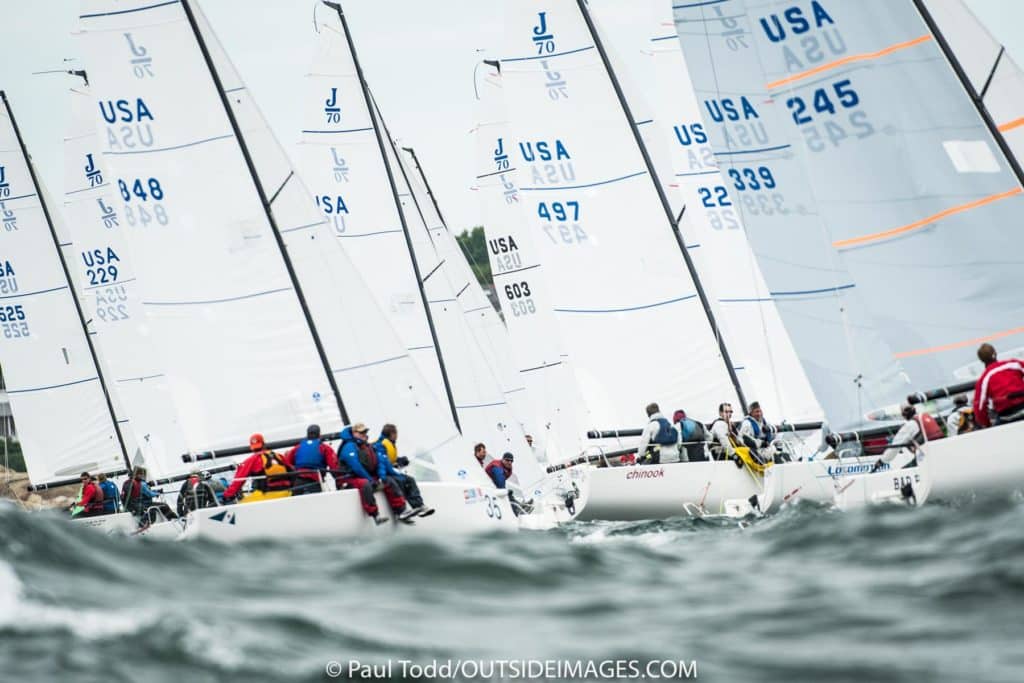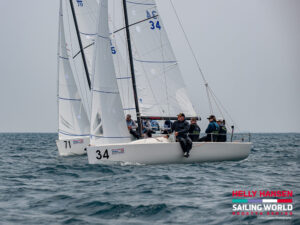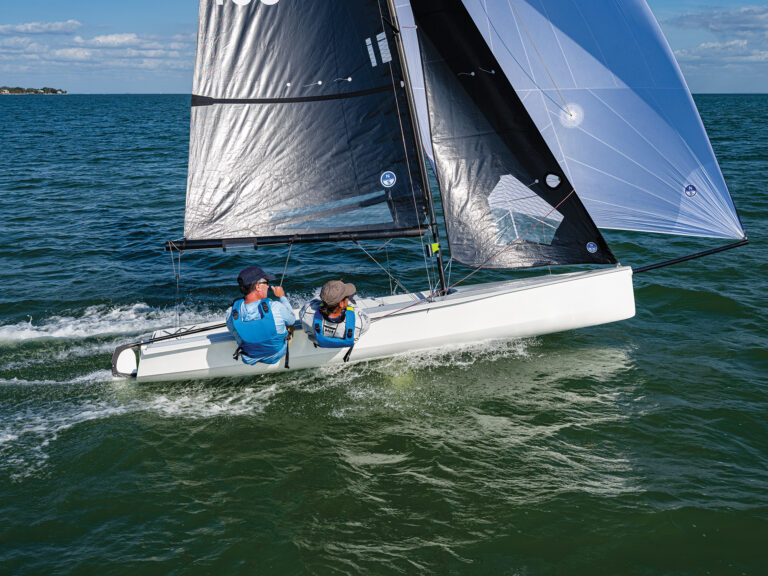
Ever been lapped in a one-design race? The thought had never crossed my mind, at least not until I gave the Flying Dutchman class a try. My debut was the pre-Olympic trials, and I painfully recall a race when I had to look backwards to see the leaders. We finished so far in last that it was dark by the time we completed the long, slow trip back to shore. Fortunately my wife, who maintained a better sense of humor than myself, aimed the car headlights down the launching ramp, and with a smile asked if we had stayed out for some extra practice.
After such humiliation you might ask, “Why bother trying a new class?” After all, if you’re comfortable sailing your own boat and finishing pretty darn well at times, why rock the boat? The answer is simple: new boats demand new techniques, and if you want to become a sharper sailor, you have to expose yourself to alternative ways of sailing. Heck, the experience can even be enjoyable – if you have the right attitude and a good game plan.
The game plan is easy. The attitude is a bit trickier. Setting unrealistic, unattainable goals can totally derail your plan for learning the new boat. Remember that no matter how hot you are in your own class, there are accomplished sailors with equally impressive results in the other classes.
After our enlightening experience in the Flying Dutchman, we completely reassessed our expectations. For sure, we recognized that unless some incurable plague attacked the rest of the U.S. FD fleet, we didn’t have much chance of making it to the Olympics. Instead, I focused on just plain enjoying the exhilarating ride, learning as much as possible and applying what I could to the other boats I sail. That didn’t mean I suddenly discovered how to make a Flying Scot or a Lightning plane upwind, but I did, for example, learn a great deal about helm balance when sailing upwind in a breeze.
Let’s say you’ve picked a new class and you’ve got the right attitude. Now it’s time to get up to speed as fast as you can. To make the most of your new experience, you need a plan of attack.
Step 1: Preparation
Research: First, gobble up all the written information that is available on the new boat. Call the major sailmakers and ask for a copy of their tuning guide. Be sure to contact the class secretary and ask for back issues of the class newsletter that have articles about tuning, sail trim and most important, boathandling techniques. Be sure to keep track of any questions that develop because there will be plenty of opportunities to ask them later.
Watch a race or two: The knowledge gained from watching the new class race can be a huge help. Watch how the fleet approaches the start. How do they trim their sails and handle their boats? Even the back-of-the-fleeters’ mistakes can be educational. If you really want to be fancy, take video footage. Watch the hot guys and take note of the questions you want to ask them later.
Set up your new boat: Armed with tuning guides, articles and the information you gained from observation, it’s time to set up your boat. Try to duplicate what you’ve seen and make notes on areas you don’t understand or can’t duplicate.
Call the sailmaker: After you think you have your boat set up like the hot guys, call the sailmaker and get the lowdown on the details of sail trim and boat setup. Be sure to ask, “How should the boat balance?” The sailmaker should give you some idea of the feel on the helm in the various conditions. Then ask, “How should the sails look in light, medium and heavy winds? What are the trim differences between normal speed and pointing, the high pointing mode, and the footing/ acceleration mode?”
Of course, you’ll have the tuning guide in front of you so you’ll be able to reference your questions about outhaul, cunningham, etc. For me, it helps to compare the trim and tuning that I’m used to on my old class to that of the new class. If the trim is different, try to find out why.
– – –
Greg Fisher has won championships in the Lightning, Flying Scot, Highlander and Thistle. However, he is best known for his dedication to helping others learn to sail their boats faster.









